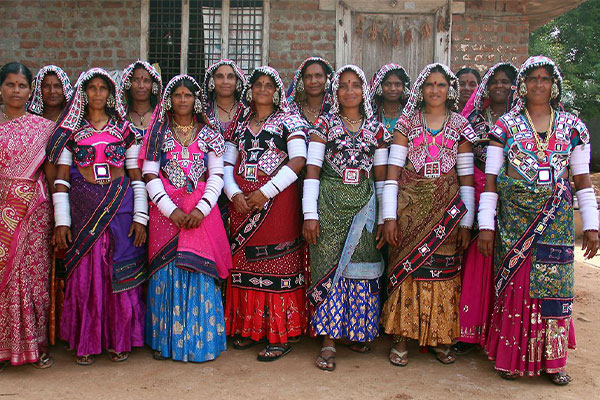
GOR / Banjara
The Banjaras, according to author J. J. Roy Burman, have settled across Rajasthan and other parts of India. They, along with the Bhopa, Domba, and Kalbelia, are often referred to as the "gypsies of India." D. B. Naik has noted significant cultural similarities between the Roma Gypsies and the Banjara Lambanis.
Author B. G. Halbar states that many nomadic communities believe they are descended from Rajput ancestry, claiming they retreated to the forests during the Mughal empire, vowing to return only after foreign influence had ended. Halbar suggests that Banjaras appear to be of mixed ethnicity, possibly originating from north-central India.
Historian Irfan Habib, however, points out that their constituent groups may not share a common origin, with theories suggesting otherwise reflecting the systemic bias of 19th-century British ethnographers who sought simplistic classifications. Laxman Satya adds that the colonial state constrained their status as Banjaras, disregarding the rich diversity among the various groups.Though not referred to as Banjaras until the 16th century, Habib believes that royal court chroniclers Ziauddin Barani and Shaikh Nasiruddin documented their activities in the Delhi Sultanate during the rule of Alauddin Khalji. Halbar suggests their existence dates back even earlier, noting that Dandin, a Sanskrit writer from the 6th century, mentioned them, albeit not by name.

.jpg)
Traditional Banjara dress consists of the kanchali (blouse) and phetiya (skirt). Banjara art includes performance arts like dance and music, as well as folk and plastic arts such as rangoli, textile embroidery, tattooing, and painting. Banjara embroidery and tattooing are highly valued and integral to Banjara identity. Lambani women specialize in lepo embroidery, which involves stitching pieces of mirror, decorative beads, and coins onto clothes. Sandur Lambani embroidery, unique to the tribe in Sanduru, Bellary district, Karnataka, has obtained a GI tag.
Banjaras celebrate several festivals, including Seetala, usually held in June or July, during which they pray for the protection of their cattle. In August, they celebrate the festival of Teej, where young, unmarried girls pray for a good groom. They sow seeds in bamboo bowls, water them three times a day for nine days, and if the sprouts grow "thick and high," it is considered a good omen. During Teej, girls sing and dance around the seedling baskets.
Traditional Banjara dance forms include Fire dance, Ghumar dance, and Chari dance. Banjaras have a sister community of singers known as Dadhis, or Gajugonia, who traditionally traveled from village to village, singing songs to the accompaniment of the sarangi.
Although traditionally a migratory people, Banjaras historically settled in fixed village accommodations during the monsoon months of June to August. Modern transportation reduced the need for their traditional occupations, leading many to turn to agriculture and other unskilled labor. Despite this, many Banjaras retained a seasonal nomadic lifestyle to supplement their income and common traits such as strict tribal endogamy, use of the Gor-Boli language, and living in tanda groups. While women continue to wear traditional clothing, men have largely abandoned their traditional attire of a white dhoti, red turban, and jewelry.